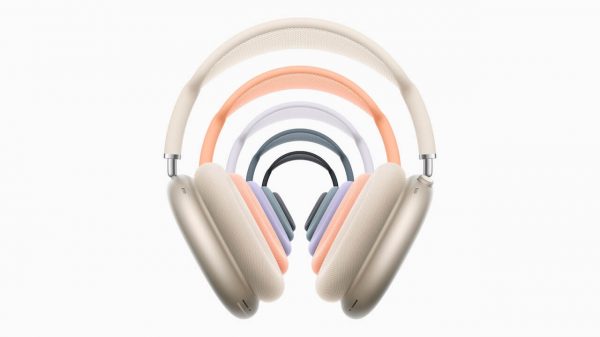Some of you may recognize the Sendy Audio brand from previous reviews of the Peacock and the Phoenix. For those that haven’t been introduced — Sendy Audio and Sivga Audio are sister companies operating from Dongguan city, China.
That specific factory handles research and development as well as production with Sivga focusing on the more modest products and Sendy taking on the flagship role.
That isn’t to say that Sivga doesn’t have some great products under its banner, but that the Phoenix and its companions are more likely to be in the $50-300 range while the Sendy line starts closer to $300, with the current flagship running $1600.
The Sendy Apollo fits into a price category where it could have been branded either way; it can be thought of as a big brother to the Phoenix or a little brother to models like the Peacock. With all of the current planar models bearing the Sendy badge, the Apollo followed suit.

The Apollo borrows a lot of its appearance from the Peacock; both use a suspension headband with the same adjustment and gimbal styles. Both models also use high polished rosewood cups with forward swept connections.
The differences between the two are the headband is not leather wrapped and the suspension is goat skin and thinner than the Peacock; the connectors are also 2.5mm mono jacks on the Apollo instead of the Micro-XLR of the Peacock, and the grills are steel instead of high polished brass.
The grilles feature a nickel steel finish and are left in the white and overlaid with a black steel star or sun pattern. The black Sun matches the pads, frame, and headband and gives the Apollo a very cohesive look.
The kit is completed with a leather hardshell carrying case that is shaped to the headphone, a hemp bag for cable storage, and the cable and adapter.

The cable is a 4 wire braid from the 4.4mm jack up to the splitter and dual wire twists above. The wire itself is either clear cased or a dark brown casing giving a nice two-tone appearance. All of the hardware is matte black anodized aluminum with spring strain relief at the jack and coin shaped slider above the splitter.
Northern 2.5mm jacks are clearly marked ‘L’ and ‘R’ as are the inside of the pads and the frame at the hinges so indexing is quick and easy. The adapter has a 4.4mm female jack in matching matte black housing with spring strain relief on one end and a male 3.5mm single ended jack at the opposite (again sporting the same housing) end.

Sendy does not supply a 6.35mm jack or adapter with the package — which I find to be rather surprising. My other minor complaint is the splitter is so low that when worn it sits even with the bottom of my sternum. It could be moved up 6 inches and still have plenty of adjustment range.
On Your Noggin
On the head, the suspension works well to distribute the weight (395 grams) and the hinges allow roughly 35° of travel on the horizontal axis and nearly as much on the vertical axis in either direction. This makes the Apollo more forgiving for those of us that wear glasses.
The earcups are rather interesting if you pay closer attention to the design details; the protein leather and memory foam are nothing out of the ordinary but the industrial design is unique.

The inner side of the pad is oval with the opening just barely larger than the driver itself. While the pads are deep, they are not particularly spacious internally and those with large ears may find that they touch the pad.
The outside of the pads use a sloped wall and give the pads a bowl appearance. Since the inner wall doesn’t share this same tilt, the result is a larger surface area and a better seal around the ear. The pads use a twist-lock to hold them in place and are easily removed and replaced, although at present no other options are offered.

The Skinny
Internally, the Apollo uses a new 68mm planar magnetic driver that Sendy spent the last three years developing; the driver uses quad former technology meaning there are magnets on both sides of the diaphragm and coils embedded on both sides of the diaphragm so movements are more precise and are exactly the same in either direction thus preventing distortions sometimes associated with non-linear movements.

The frequency response of the new driver is listed as 20Hz-40kHz with a nominal impedance of 16 ohms and a sensitivity of 95 dB (+/- 3 dB). I had no trouble driving the Apollo with a number of Dongle DACs and low powered DAPs like the original Cayin N3; but it does improve some both qualitatively and quantitatively with better sources.
I found that the bass tightened up with more impact and that the Apollo is capable of reproducing good levels of micro-detail if the rest of the system is up to the task.
Sound
I was asked by the Sendy team to burn in the headphones for 100 hours before listening; the concept of burn-in is controversial for many and one can understand the cynicism.
Manufacturers test drivers (we hope that they do) before they use them and most loudspeaker manufacturers already apply some degree of burn-in at the factory before any products are shipped.
I’m not entirely convinced that the sound changed that much from the unboxing to the 100 hour mark, but I did subject the Apollo to hours of white and pink noise, and a rather heavy diet of heavy metal for a few days to see if that changed anything at all.

Something that stands out about the Sendy Apollo is how sensitive it is to both sources and amplification; you can switch back and forth between your phone and an entry-level DAP and the differences will be quite noticeable.
The tonal balance is definitely on the warmer and thicker side; what’s fascinating is that the bass does not suffer from too much emphasis in that regard.
Picking a source that also leans a bit warm and thick can easily be too much of a good thing. Oddly, some cooler sources were not great pairings either. The Sony WM1A wasn’t great, the Burson Conductor 3XR was considerably better, and the RME ADI2 ($1299 at Amazon) was better yet.
My favorite pairing of the solid state amps I had at home was the Yulong DA1 ($2499 at Amazon) in oversampling mode followed by the RME/HPA-1 pair. The Apollo seems to really find its niche with tubes though and the Auris Euterpe, Feliks Audio Elise, Xduoo Ta-30, and Little Dot MK3Se all performed well if the tubes installed didn’t add a ton of additional warmth.
My favorite pairing was the Euterpe with Telefunken tubes installed. It delivered a great mix of detail and warmth to the sound.
The bass is well extended but there is evident sub-bass roll-off below about 50Hz that keeps the Apollo from being really impactful and sub-bass is more heard than felt.
The low end has just enough impact to be satisfying but it’s never overwhelming; the mid bass has more emphasis and that is where the tonal balance and presentation begins to shift.
Attack is slightly faster than decay which helps give string bass a nice natural tonality, but makes electric bass seem just a little strained. The electric bass needs a little more range of motion to be entirely natural sounding. The mid bass does contribute a lot more to the overall signature and provides the foundation of a slightly thick, warm sounding tone that stays with the signature for the rest of the range.
While not a bass head model in terms of quantity of bass, those looking for a warmer thicker sound without losing clarity or detail will appreciate the Apollo.
The mids are not emphasized and the result is the lower midrange starts with the same level of emphasis as the mid bass but then drop back as we move up, leaving male vocals a bit thicker and warmer than female vocals and in a rare twist — the lower voices wind up standing slightly in front of the higher.
This is not a reference tuning and won’t please those looking for one. Guitar has ample growl with some sharpness but one thing that is notable is as tracks get busier, it does lose a bit of clarity and there is some slurring that becomes audible.
Strings and piano notes have ample body but they lose some energy or vitality in the process; there could be more detail in that regard with all genres of music.
The lower treble is elevated to a level roughly equal to the mid bass which helps with upper strings and higher voices. This elevation plateaus and is maintained at a near constant level through most of the treble range before taking another jump at the top end that emphasizes air and sparkle at the top without getting sibilant in the process.
Snare has good rattle with crisp attack and cymbals have enough energy to sound good without getting metallic. There is a tough line to walk between not enough energy and too much and the Apollo does it well here. Detail level is about average for a headphone at this price-point so while energy is good, it doesn’t translate into resolution.
The soundstage and imaging performance is really quite interesting; it may not offer the cavernous depth and height of the best planar magnetic headphones but it feels very intimate and the depth is very respectable.
The Competition
The Audeze’s product lineup realistically starts out about $300 higher in price for the LCD-2 Classic; that 50% increase in price over the Apollo makes any comparison slightly unfair.
The new Edition XS and HE-R9 from HiFiMAN are a much better comparison to the Apollo because of price and the types of components that are likely to be paired with them.
The R9 is a closed-back design with a dynamic driver that sounds far more similar to the Sendy Apollo than the Edition XS; the planar model delivers a much more open sounding presentation that is more detailed and spacious sounding.
The Monoprice Monolith M1070 and M1570 are also good comparisons. These two headphones bracket the Apollo with the M1570 at $599 and the M1070 selling for $399 USD.
I chose to compare the M1570 and found the two quite similar tonally, while the M1570 was heavier, less comfortable, and not as well crafted at least where fit and finish are concerned. The M1570 may be as well built from a durability perspective, but it lacks the finesse of the Apollo.

Conclusion
The Sendy Apollo is going to appeal to a very specific kind of listener. If you are into a more analytical sounding pair of headphones — these are definitely not going to work for you.
The Apollo deliver a warmer sounding presentation; it is also not a very aggressive sounding headphone that thrusts everything forward which can be tiring for some listeners. That tonal balance and presentation also makes it easier to pair with a wider range of amplifiers and source components.
The build quality is first rate and while materials aren’t as high end as the Peacock; it shares the same construction methods, headband design, and the level of fit and finish is on par with its bigger brother.
In many ways, the Sendy Apollo reminds me of the older Audeze LCD Series from a tonal perspective; warm, fluid, and a very pleasant long-term listen. It doesn’t deliver state-of-the-art resolution or detail, but it’s a very capable headphone for $499.
Where to buy: $499 at Musicteck.com



































